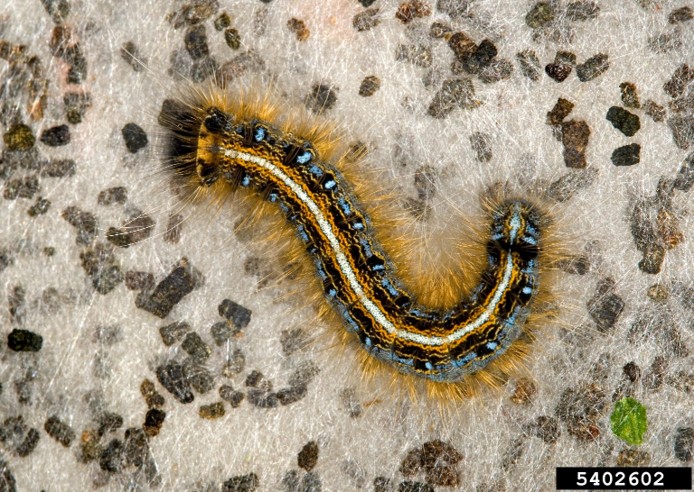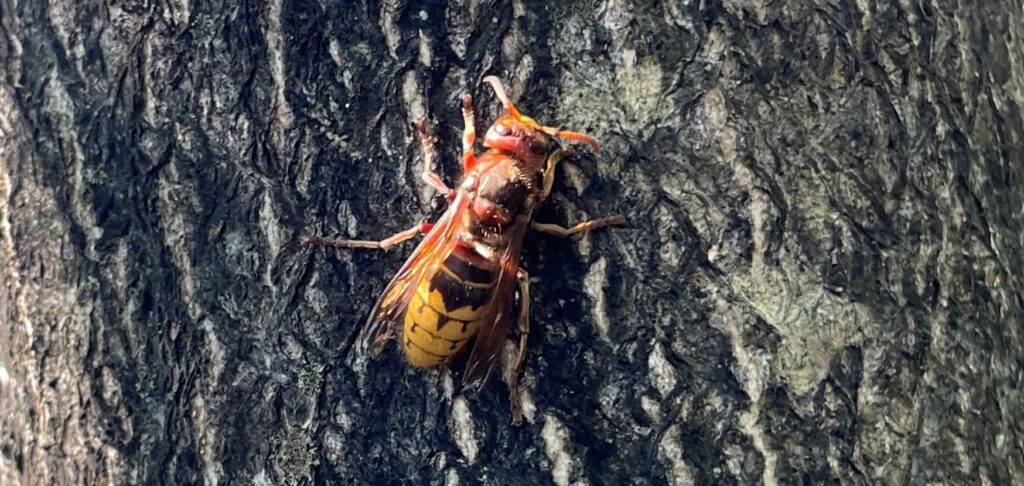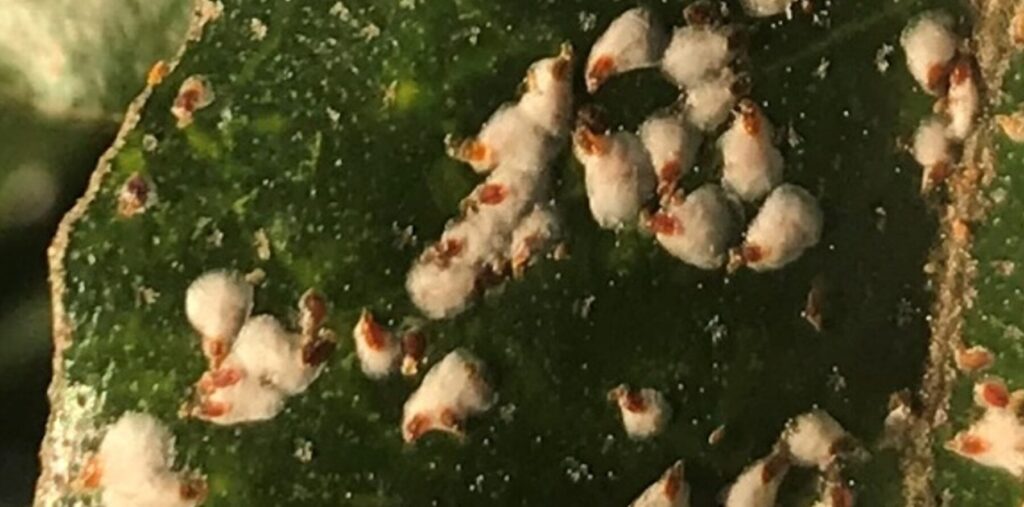
Granulate Ambrosia Beetle
Xylosandrus crassiusculus (Mot.)
Photo credit: Shimat V Joseph, University of Georgia.

Brown Marmorated Stink Bug
Halyomorpha halys (Stål)
Photo credit: Shimat V Joseph, University of Georgia.

Scales in Ornamentals
Photo credit: Shimat V Joseph, University of Georgia.

Japanese Maple Scale
Lopholeucaspis japonica Cockerell
Photo credit: Brian Kunkel, University of Delaware.

Aphids
Photo credit: Shimat V Joseph, University of Georgia.

Azalea Bark Scale
Eriococcus azalea (Comstock)
Photo credit: Clemson University – USDA Cooperative Extension Slide Series, Bugwood.org

Bagworms
Photo credit: Pennsylvania Department of Conservation and Natural Resources Forestry, Bugwood.org

Japanese Beetle
Popillia japonica Newman
Photo credit: Shimat Joseph, University of Georgia, Bugwood.org

Grass Lace Bug
Photo: Kris Braman, University of Georgia.

Thrips Species
Photo credit: Jack T. Reed, Mississippi State University, Bugwood.org

Tea Scale
Fiorinia theae Green
Photo credit: Lorraine Graney, Bartlett Tree Experts, Bugwood.org

Mite Vector of Rose Rosette Virus
Phyllocoptes fructiphilus Keifer
Photo credit: Gary R. Bauchan, USDA-ARS

Redheaded Flea Beetle
Systena frontalis (F.)
Photo credit: Shimat Joseph, University of Georgia

Chilli Thrips
Scirtothrips dorsalis Hood
Photo credit: Andrew Derksen, USDA-APHIS

Larger Canna Leafroller
Calpodes ethlius (Stoll)
Photo credit: Shimat Joseph, University of Georgia

Fall Webworm
Hyphantria cunea (Drury)
Photo credit: G. Keith Douce, University of Georgia

Lantana Lace Bug
Teleonemia scrupulosa Stål
Photo credit: Shimat Joseph, University of Georgia

Flatheaded Apple Borer
Chrysobothris femorata (Olivier)
Photo credit: Whitney Cranshaw, Colorado State University.

Whiteflies
Bemisia tabaci (Gennadius)
Photo credit: Scott Bauer, USDA Agricultural Research Service, Bugwood.org

Dogwood Borer
Synanthedon scitula (Harris)
Photo credit: NY State Ag Experiment Station.

Wax Scale
Ceroplastes spp.
Photo credit: Joseph LaForest, University of Georgia, Bugwood.org.

Juniper Scale
Carulaspic juniperi
Photo credit: Lorraine Graney, Bartlett Tree Experts, Bugwood.org

Asian Longhorned Beetle
Anoplophora glabripennis
Photo credit: Kenneth R. Law, USDA APHIS PPQ, Bugwood.org

Bristly Roseslug Sawfly
Cladius difformis
Photo Credit: Whitney Cranshaw, Colorado State University, Bugwood.org

Magnolia Scale
Neolecanium cornuparvum (Thro)
Photo Credit: Eric R. Day, Virginia Polytechnic Institute and State University, Bugwood.org

Tent Caterpillars
Malacosoma spp.
Eastern tent caterpillar larva. Photo by David Cappaert, Bugwood.org.

European Hornet
Vespa crabro
Photo credit: Shimat Joseph, University of Georgia

False oleander scale
Pseudaulacaspis cockerelli
Photo credit: Shimat Joseph, University of Georgia
Biology and Management
Effective management of insect pests of ornamentals requires proper diagnosis of the problem. Often we can make reliable diagnoses based on damage that insects cause. The most reliable diagnosis requires identification of the insect or mite itself. Diagnosis based on symptoms can be divided into damage categories as follows:
- tattered leaves or flowers
- stippled, bleached or bronzed foliage
- die back of plant parts
- evidence of insects themselves
Pests responsible for each category include:
- Tattered leaves or flowers can be caused by grasshoppers, caterpillars, adult or immature beetles.
- Stippled, bleached or bronzed foliage may be caused by insects with piercing mouth parts such as lace bugs or plant bugs. Mites or thrips may also cause this type of damage.
- Die back of plant parts is often caused by scale insects or by beetles or moth larvae that bore inside the stems.
- Evidence of insects themselves may be webs, tents, cases, flocculence (cottony material), frass (fecal material), sawdust.
Major Pests of Ornamentals in Landscapes and Nurseries
| Pest | Nursery | Landscape |
|---|---|---|
| Granulate ambrosia beetle | Yes | Yes |
| Brown marmorated stink bug | – | Yes |
| Japanese maple scale | Yes | – |
| Aphids | Yes | Yes |
| Azalea bark scale | – | Yes |
| Bagworms | – | Yes |
| Japanese beetle | – | Yes |
| Grass lace bug | – | Yes |
| Thrips | Yes | Yes |
| Tea scale | Yes | Yes |
| Mites of rose rosette virus | – | Yes |
| Redheaded flea beetle | Yes | – |
| Chilli thrips | Yes | – |
| Larger canna leafroller | – | Yes |
| Fall webworm | – | Yes |
| Lantana lace bug | – | Yes |
| Flatheaded apple borer | Yes | Yes |
| Whiteflies | Yes | Yes |
| Dogwood borer | Yes | Yes |
| Wax scale | Yes | Yes |
| Juniper scale | Yes | Yes |
| Asian longhorned beetle | – | Yes |
| Bristly roseslug sawfly | – | Yes |
| Magnolia scale | – | Yes |